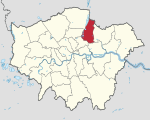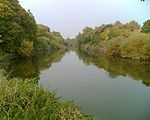Lammas School
Academies in the London Borough of Waltham ForestLeytonLondon school stubsSecondary schools in the London Borough of Waltham Forest
Lammas School is a coeducational secondary school and sixth form located in Leyton area of the London Borough of Waltham Forest, England.Previously a community school administered by Waltham Forest London Borough Council, in December 2018 Lammas School converted to academy status. The school is now sponsored by The Griffin Schools Trust.
Excerpt from the Wikipedia article Lammas School (License: CC BY-SA 3.0, Authors).Lammas School
Seymour Road, London Leyton (London Borough of Waltham Forest)
Geographical coordinates (GPS) Address Website External links Nearby Places Show on map
Geographical coordinates (GPS)
| Latitude | Longitude |
|---|---|
| N 51.566 ° | E -0.0254 ° |
Address
Lammas School and Sixth Form
Seymour Road 150
E10 7LX London, Leyton (London Borough of Waltham Forest)
England, United Kingdom
Open on Google Maps







